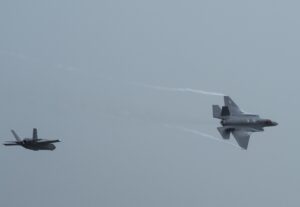
The U.S. Air Force intends that its Joint Simulation Environment (JSE) effort begun this year build upon the experience of the F-35 JSE under the F-35 Joint Program Office (JPO) at Patuxent River Naval Air Station, Md. F-35 JSE testing is part of the fighter's initial operational test and evaluation (IOT&E), the successful completion of which is required for a Pentagon decision to authorize F-35 full-rate production. The F-35 JPO established JSE for F-35 IOT&E some five years ago after…











